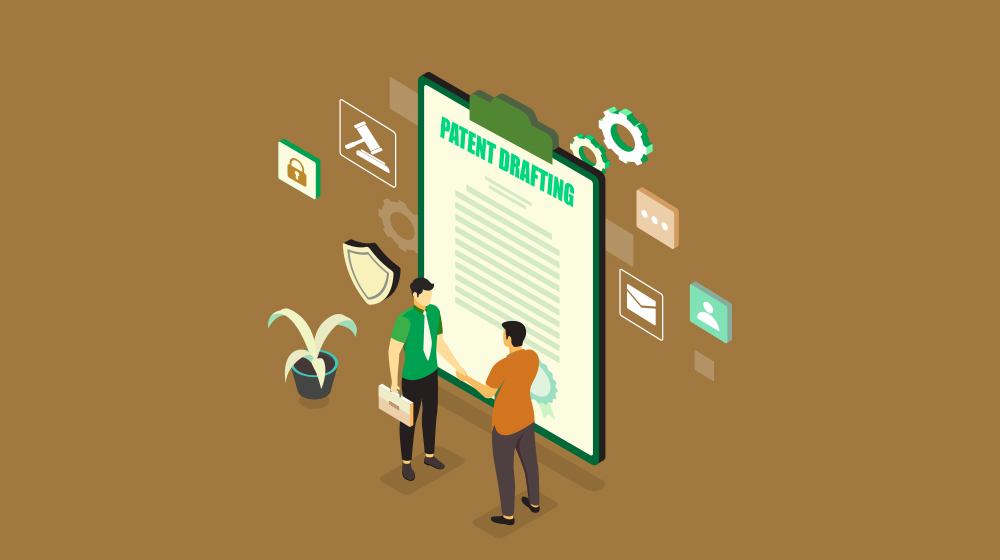Everything You Need to Know About Patent Drafting
Filing a patent can transform your idea into a protected invention, granting you exclusive rights to market or license it. Patent drafting is the first critical step in this process, securing your idea against reproduction, reuse, and theft. This blog will guide you through the essentials of patent drafting, explaining its purpose, key elements, and how LegalAdvantage can assist you in this journey.
Purpose of a Patent
A patent is a powerful legal and technical document providing the inventor with exclusive rights to commercialize their idea. It safeguards the invention against unauthorized use, ensuring the inventor alone benefits from the innovation.
Typically issued for tangible inventions involving research and technology, patents protect the individual technical parts that make a product unique. For example, while the inventor may not patent an entire cell phone, the inventor can patent its unique application codes, screen technology, or battery type.
To secure these rights, the inventor must complete the patent writing and filing process.
What is Patent Drafting?
Patent drafting involves creating a detailed description of the invention and explaining its originality and innovation. This process is crucial for safeguarding new inventions and ensuring each one is unique. It requires a thorough understanding of the invention and the ability to articulate its novel aspects clearly and comprehensively.
Key Elements of Skillful Patent Drafting
Understanding the Invention
The first step in drafting a patent is to understand the invention thoroughly. This requires working closely with the inventor(s) to grasp the technical details contributing to its novelty and technical advancement, underlying principles, various embodiments, and potential applications.
Conducting a comprehensive prior art search helps identify existing patents and publications relevant to the invention, enabling the drafter to highlight its novelty and inventive step effectively.
Draft Claims Strategically
The patent claims define the scope of protection sought and are often the most critical part of the patent application. Claims must be drafted strategically to cover the broadest possible scope of the invention while avoiding overly broad claims.
Use a combination of independent and dependent claims to capture different aspects and embodiments of the invention and include fallback positions to increase claim flexibility and resilience.
Focus on Clarity and Precision
Clarity and precision are paramount in patent drafting. The patent specification should be clear, concise, and free from ambiguity, allowing a person skilled in the relevant field to understand the invention and perform it without undue experimentation. Use simple language wherever possible and avoid overly complex or technical terms that may obscure the invention’s essence.
Anticipate Potential Challenges
During patent drafting, it’s essential to anticipate potential challenges that may arise during the examination process or enforcement of the patent. A skilled patent drafter should foresee possible grounds for objections from patent examiners or competitors and prepare to address these issues in the patent application. This preparation includes providing additional experimental data, ensuring definitiveness in claims, and avoiding vague terminology.
Provide Sufficient Description
A patent specification must provide a sufficient description of the invention to enable a person skilled in the art to practice it without undue experimentation. This includes disclosing the invention’s structure, operation, functionality, and any variations or alternatives. Detailed drawings and examples help illustrate key concepts and technical advancements effectively. A well-drafted patent description must fully support the claims made in the application.
Review and Revise Diligently
Patent drafting is an iterative process that requires diligent review and revision. After drafting the initial patent application, carefully review each section for accuracy, consistency, and compliance with legal requirements. Seek technical comments from experts and patent attorneys to identify any weaknesses or areas for improvement. Revise the application accordingly to enhance its overall quality, strength, and enforceability.
The Role of a Patent Attorney
Given that a patent is a legal document, it must include the necessary language and clauses to protect the invention. Patent attorneys are well-versed in the laws governing patents and can provide invaluable assistance during patent drafting. Before revealing the invention, ensure they sign a Non-Disclosure Agreement (NDA).
A skilled patent attorney will ensure the invention is comprehensively understood and accurately described, maximizing the chances of a successful patent grant.
How Can LegalAdvantage Help?
At LegalAdvantage, we offer end-to-end support in the patent drafting process. Our team of experienced professionals works closely with inventors to understand their inventions thoroughly. We conduct detailed prior art searches, draft strategic claims, and provide clear and precise descriptions to ensure robust patent protection. Our iterative review process guarantees a high-quality patent application, enhancing the chances of securing a patent.
Robotic Patent Drafting
The future of patent drafting is being revolutionized by advancements in artificial intelligence (AI) and robotics. Robotic patent drafting leverages AI algorithms to analyze vast amounts of prior art, identify novel elements, and generate patent claims with remarkable precision. This technology enhances the efficiency and accuracy of patent drafting, reducing the time and cost involved.
While human expertise remains indispensable for nuanced legal and technical understanding, robotic patent drafting serves as a powerful tool to streamline the process and improve the quality of patent applications.
At LegalAdvantage, we integrate the latest AI technologies to support our patent drafting services, ensuring our clients benefit from both cutting-edge technology and expert legal guidance.
Conclusion
Patent drafting is both an art and a science. A well-drafted patent can secure valuable intellectual property rights, provide a competitive edge, and be a foundation for future innovation.
By understanding the key elements of patent drafting and leveraging the expertise of professionals like LegalAdvantage, inventors can navigate the complex patent application process effectively, ensuring their inventions are well-protected and their rights are enforced.
For more information on patent drafting and to maximize the potential of your inventions, contact LegalAdvantage today.


